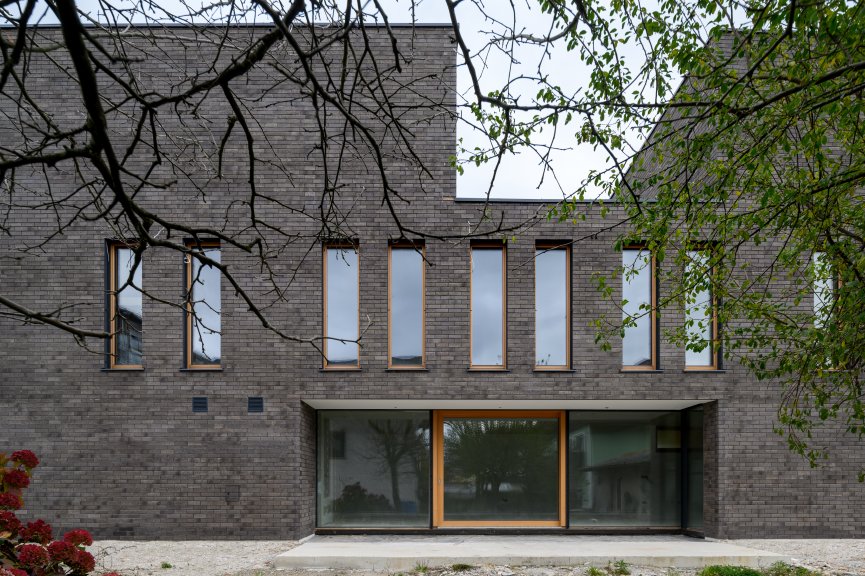The Double Brick House
The new semi-detached house stands on a long and narrow plot of land, which is sandwiched between older houses. The new house is designed to accommodate two large families of five and is built on the site of a previously dilapidated residential building, which was of poor quality and offered low living standards.
Baumit Materialien
Weitere Baumit Produkte
Facade system BaumitCeramic
Weiterführende Informationen
Area Rožna dolina was known for a long time as the most prestigious villa district in the Slovenian capital of Ljubljana. However, as early as the 1930s its periphery slowly began to fill with low-quality housing. Today these poorly maintained houses are surrounded by overgrown gardens, woodsheds, and workshops, which impact the overall aesthetic, functional and hygienic conditions of this once important urban district. In this degraded part of the city a process of gradual re-urbanisation is currently taking place. It started in the socialist period some 60 years ago with the extensive demolition of existing urban fabric and the construction of massive new blocks of apartments. Today it is continued with the construction of an increasing number of new buildings, either in the form of luxury apartments or individual and exclusive modern villas. A new urban matrix is thus emerging that will gradually outgrow the chaotic suburban tissue. This interim period is, however, full of paradoxes and incongruities between the old and new. Despite the lack of a clear spatial vision and broader strategy, the district is slowly being filled with modern facilities which will raise the quality of both living standards and the urban area. The new semi-detached house stands on a long and narrow plot of land, which is sandwiched between older adjacent houses. The new house is designed to accommodate two large families of five and is built on the site of a previously dilapidated residential building, which was of poor quality and offered low living standards. The unusual building plot dictated a unique narrow floor plan, which measures only 6 m in width and 30 m in length. The height of the building is 9m and it has three functional floors. It houses two identical residential units, each having a usable area of 170 m2. The units are sequentially placed one behind the other with a common parking area in front of the building facing the access street. On the ground floor there is a large living room with an attached kitchen. Sitting behind glass panoramic windows, the living quarters are well lit and can be fully connected with a 30 m long and 6 m wide outdoor atrium. The first floor is where the children's rooms, their bathrooms and a study are located. The master bedroom with adjoining rooms is located on the top floor, with access to a large rooftop terrace. The house acquired its characteristic and recognisable silhouette in the process of stacking together the functional areas. Visually, the building is conceived as a monolith, a materially uniform cube, which is sculpturally modified according to the sculptural principle of subtraction. The façade cladding made of dark brown bricks gives the house its desired uniformity of materiality and corporeality. The different rhythms of the windows and alternation of open and closed surfaces on the façades do not defeat the volume perception of the building, as it is perceived on the scale of a building primarily through its texture and not as a structure. The further arrangement of the wider spatial environment of the building will be the result of negotiations with neighbours, who may in the future follow this example, replace their dilapidated buildings and improve the general urban condition of the space, among which can also be mentioned such common things as the underground placement of electrical conductors, repairing the pavements, fixing roads, mending fences and revitalising the green gardens.











